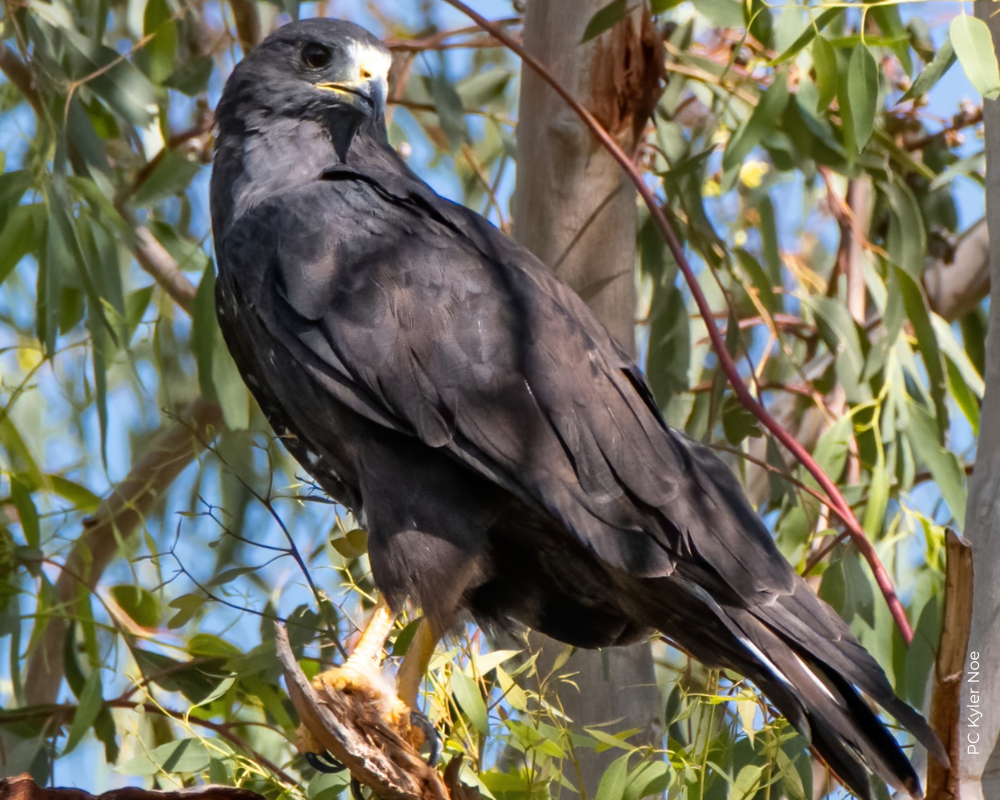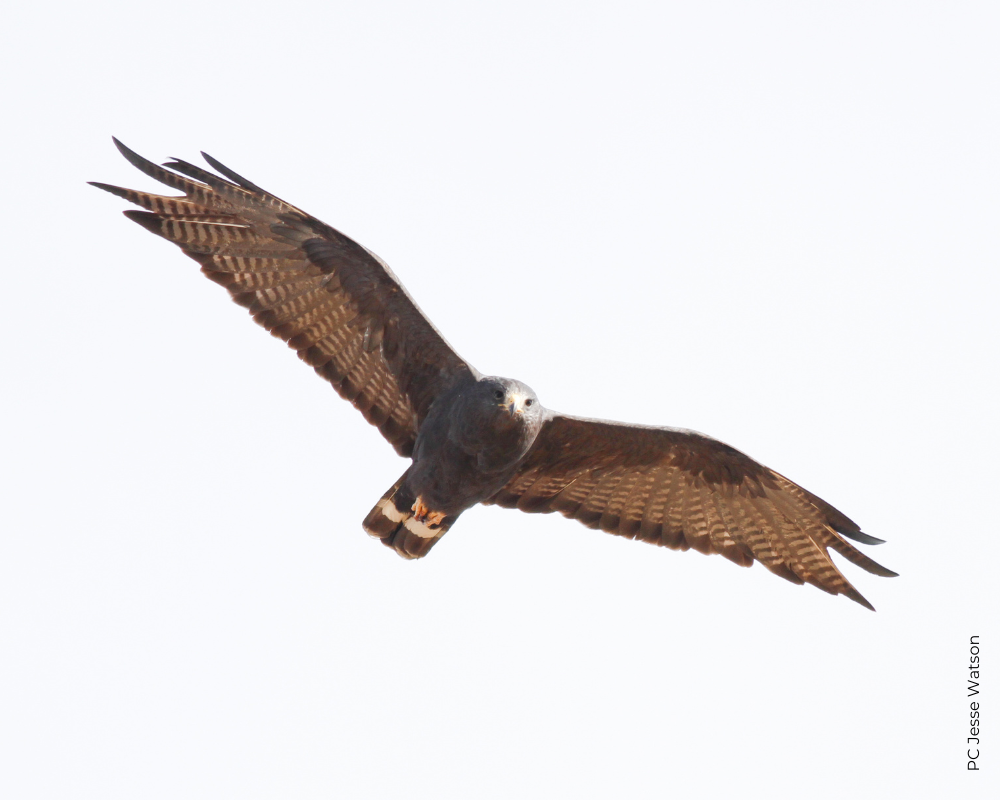Overview
Zone-tailed Hawk is a large raptor of riparian areas, mountains, and arid hills of the Southwest Canyonlands. They nest in large trees along creeks, in cactus in open deserts, and sometimes on canyon walls. They are skilled aerialists, spending hours on end on the wing searching for prey. Sometimes they mix in with groups of similar-looking Turkey Vultures, where they are passed over by birders without a second glance. They are thought to mimic Turkey Vultures in order to surprise prey that has become conditioned to the unthreatening vultures. In fact, Zone-tailed Hawks resemble and associate with Turkey Vultures in many ways, nesting in close proximity to vultures and even roosting with them at times in winter. Zone-tailed Hawks hunt birds (doves in particular), mammals, and reptiles, usually captured through low-to-the-ground quick-drop stoops, but they also perch-hunt in the morning hours before thermals develop.
Zone-tailed Hawk is very similar to Common Black-Hawk as well, and they overlap in range and habitat. When perched, the two are confused for each other, but Zone-tailed Hawk is distinguished by its slimmer build with longer wings, gray (vs. bright yellow) lores, grayish-white tail bands dorsally, and shorter legs. However, the two differ drastically in shape when in flight. Zone-tailed Hawk is much longer and narrower-winged than Black-Hawk, with a longer tail. Zone-tailed Hawk is fairly uncommon as a breeder in the US and withdraws south in winter, with a few staying in south TX and southern AZ. Their call is a harsh, drawn-out kreeaaaaar!




